UCSB MAT Computational Fabrication - Playing With Extrusion and Arrays
by masoodkamandy in Workshop > 3D Printing
212 Views, 2 Favorites, 0 Comments
UCSB MAT Computational Fabrication - Playing With Extrusion and Arrays
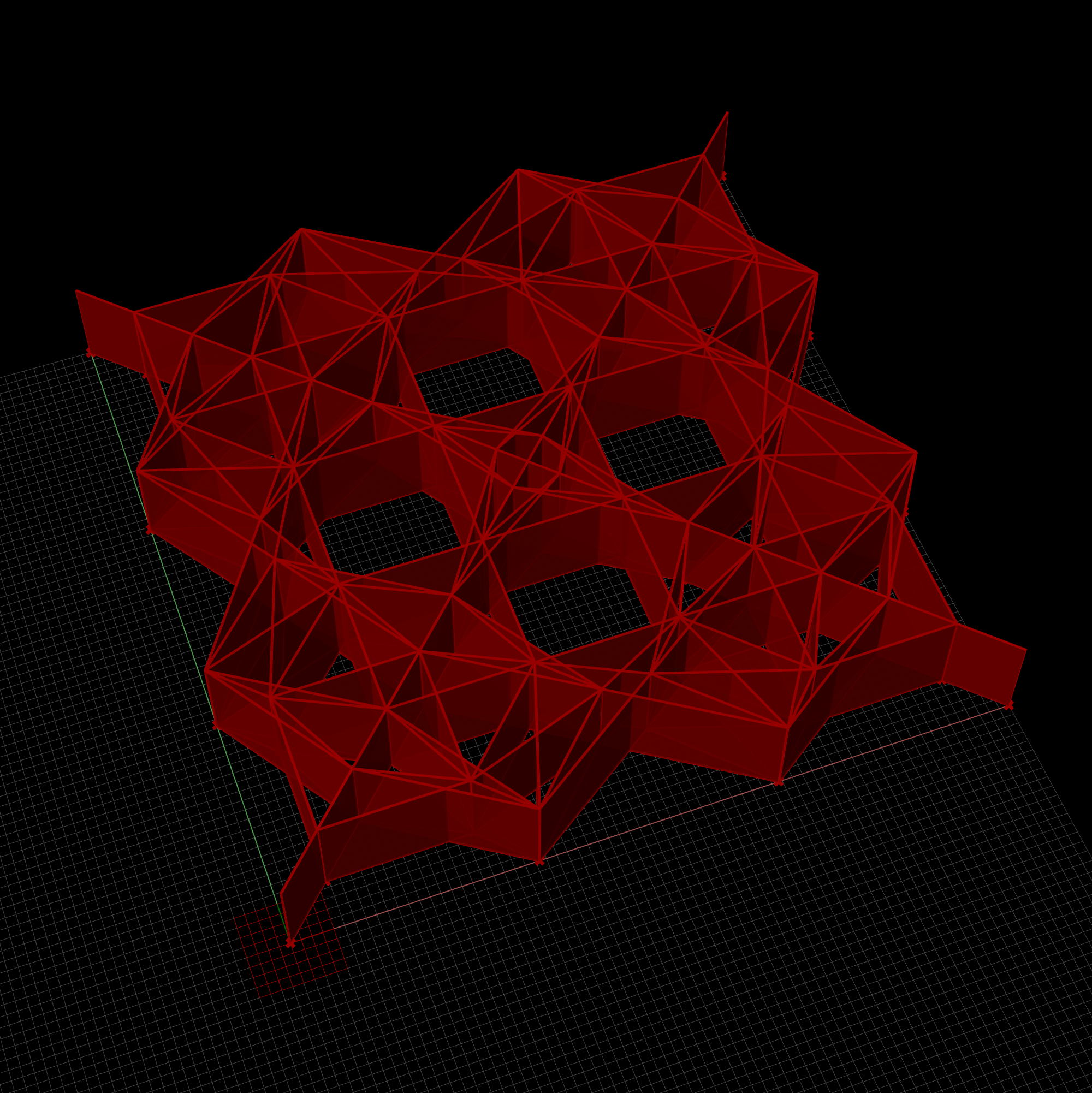
This is my first week assignment in Computational Fabrication with Prof. Jennifer Jacobs at UC Santa Barbara. In this assignment I utilized the tutorial provided by Dr. Jacobs to create procedural patterns using a grid. I explored various rule sets using boolean expressions. In particular I arrived at bitwise operators as providing unusual and evocative patterns. I also made a few adjustments to the code that was provided to aid in my pattern discovery process and to help get the desired output.
Settings for this image:
rx = 16
mod = 5
mtype = 4
distLow = 6.0
distHigh = 25.0
Grasshopper Steps and Modifications
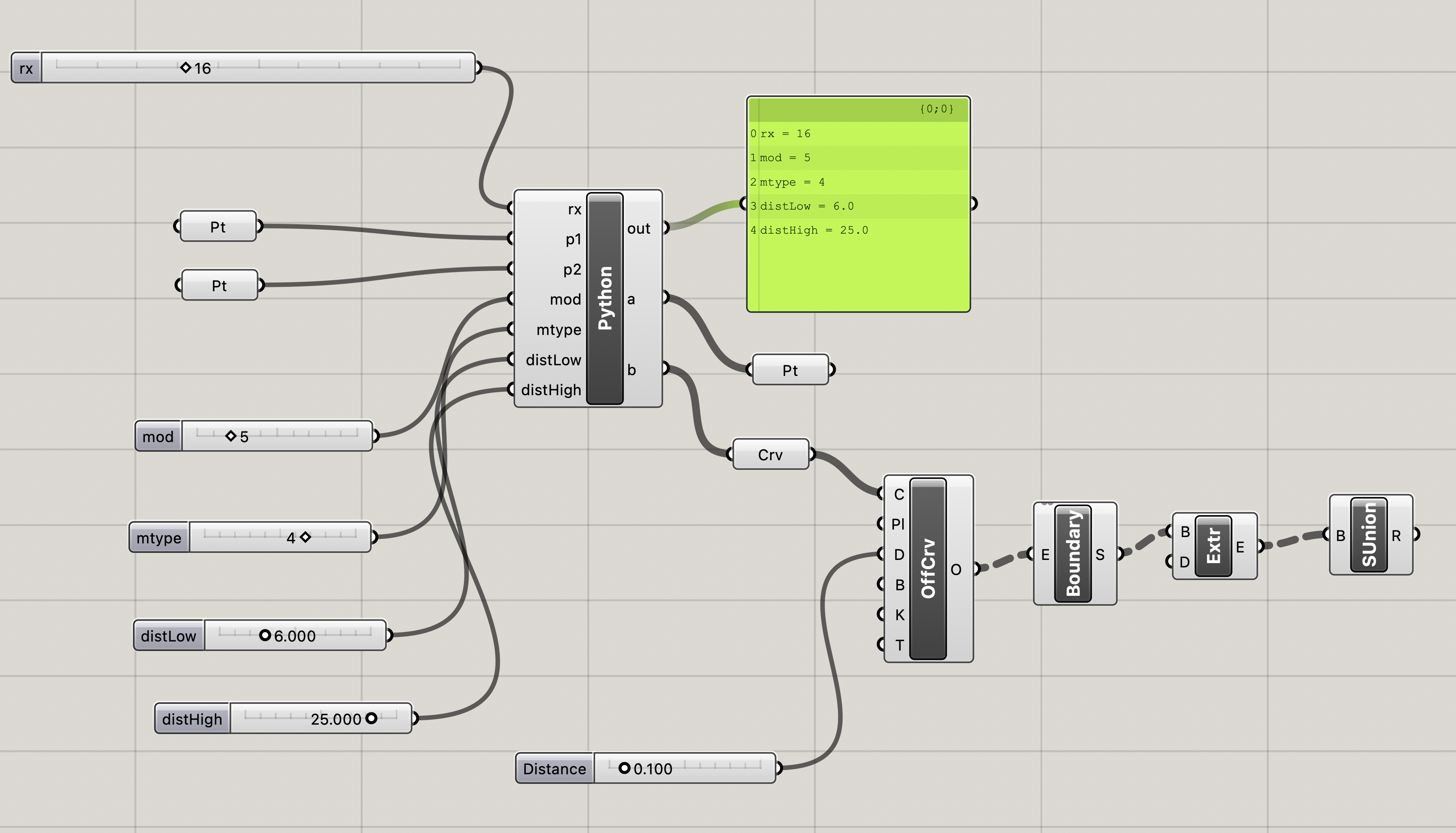
The image provided shows you the subtle modifications I made to the provided code.
- Instead of using a distance to create the Delaunay triangulations, I decided to use a range (see distLow and distHigh), as it afforded me more flexibility. With a low and a high parameter, I could control how many connections were being made regardless of how many points there were. This allowed me more esthetic variability.
- I also added printed output that gave me a quick reading of all of the parameters so that I could copy/paste them and use them to catalog my results.
Code Changes: Print All Parameters

I added a piece of code that prints all parameters whenever I create a new model.
Code: I Added Bitwise and Relational Expressions

Inspired by this post by programmer Martin Kleppe on Twitter, I decided to explore some bitwise boolean expressions to see what kinds of diverse patterns I could explore.
I Created a Range Instead of a Single Distance
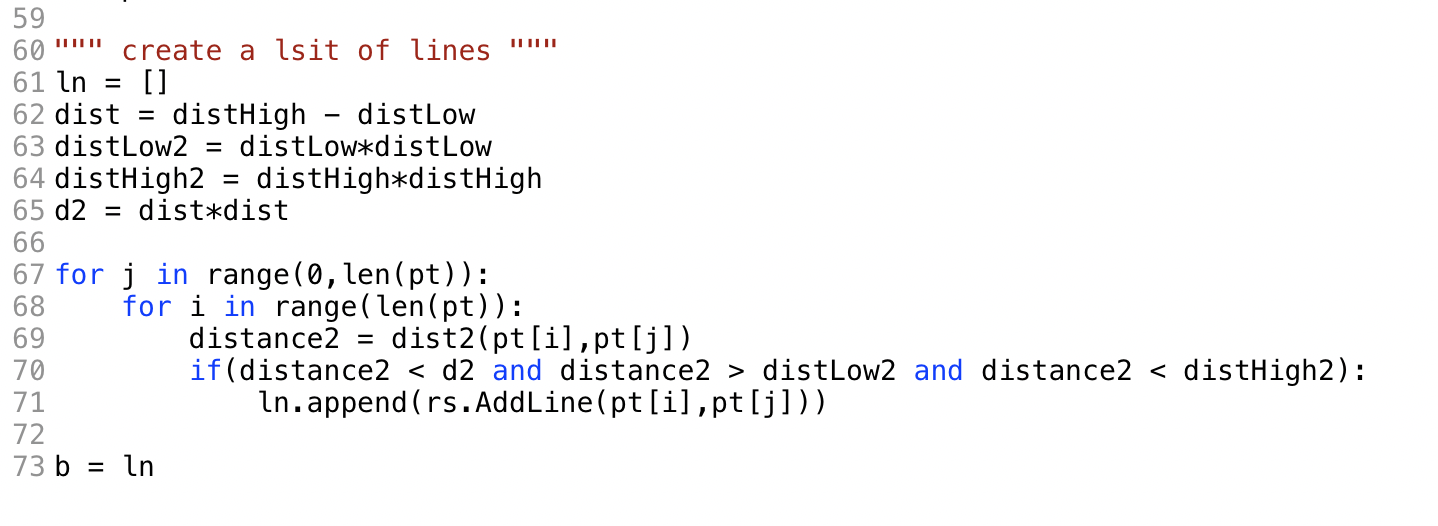
In order to facilitate creative exploration, I decided to create a range instead of a single distance.
One insight that I gained through this process is that this seems like it may be an integral part of Islamic geometry as well. Now that I've been able to explore this a bit, it seems like testing for ranges and connecting points only within certain parameters may be what gives some Islamic geometry its characteristic look.
Complete Code
My complete code with modifications is available as a GitHub gist.
Example 1
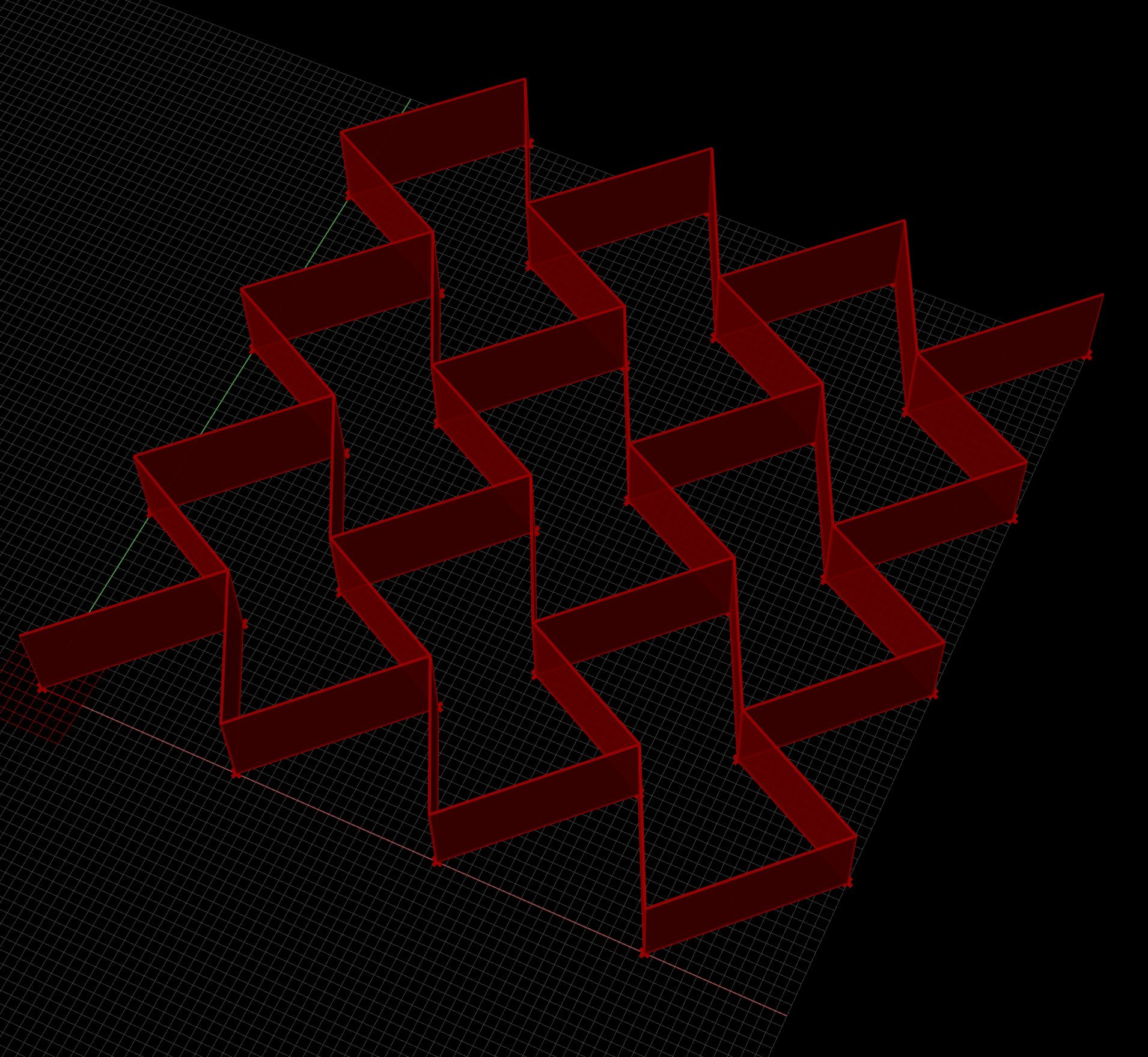
rx = 23
mod = 6
mtype = 3
distLow = 11.303
distHigh = 30.0
Example 2
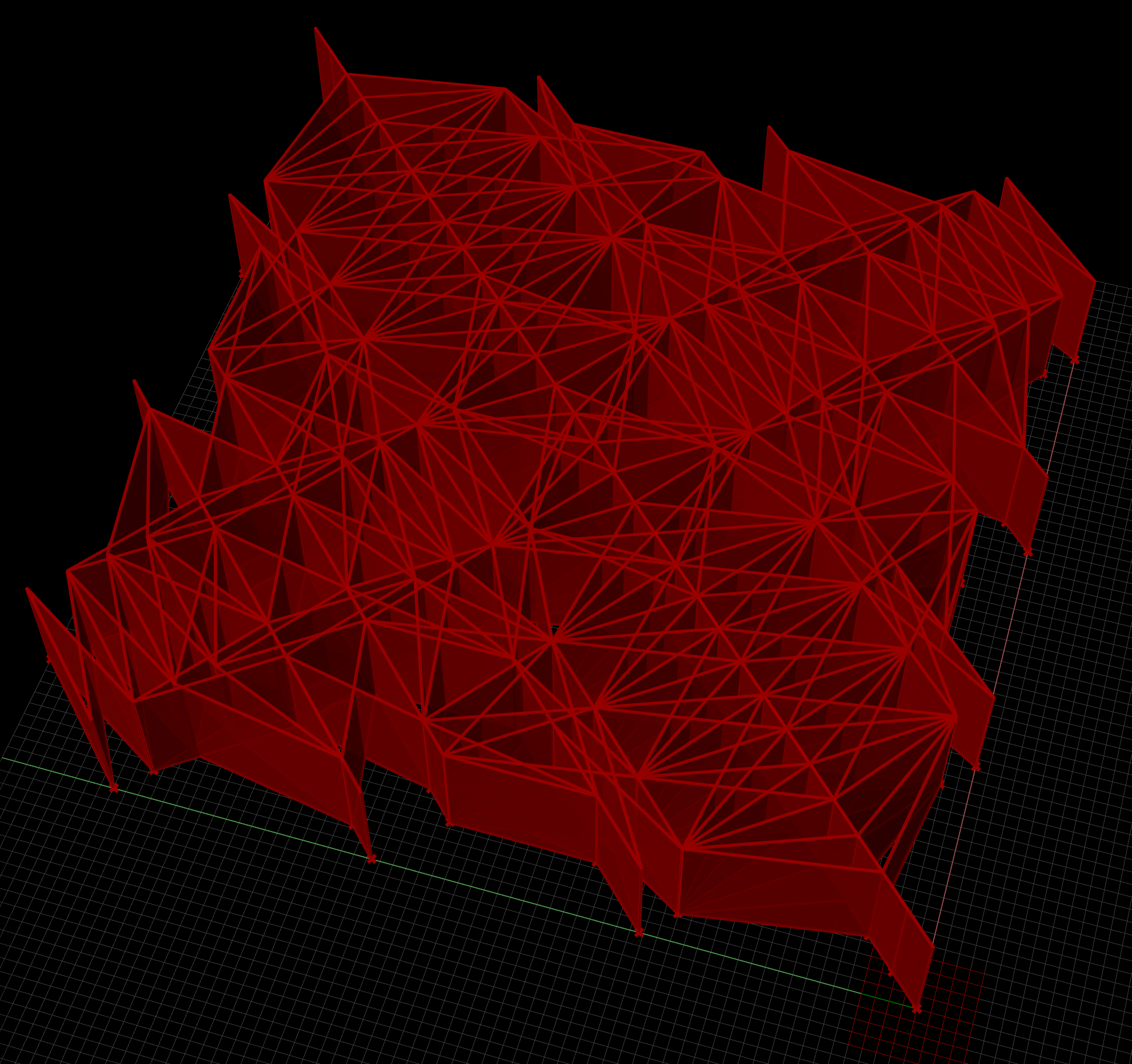
rx = 32
mod = 9
mtype = 4
distLow = 10.0
distHigh = 24.0
Example 03
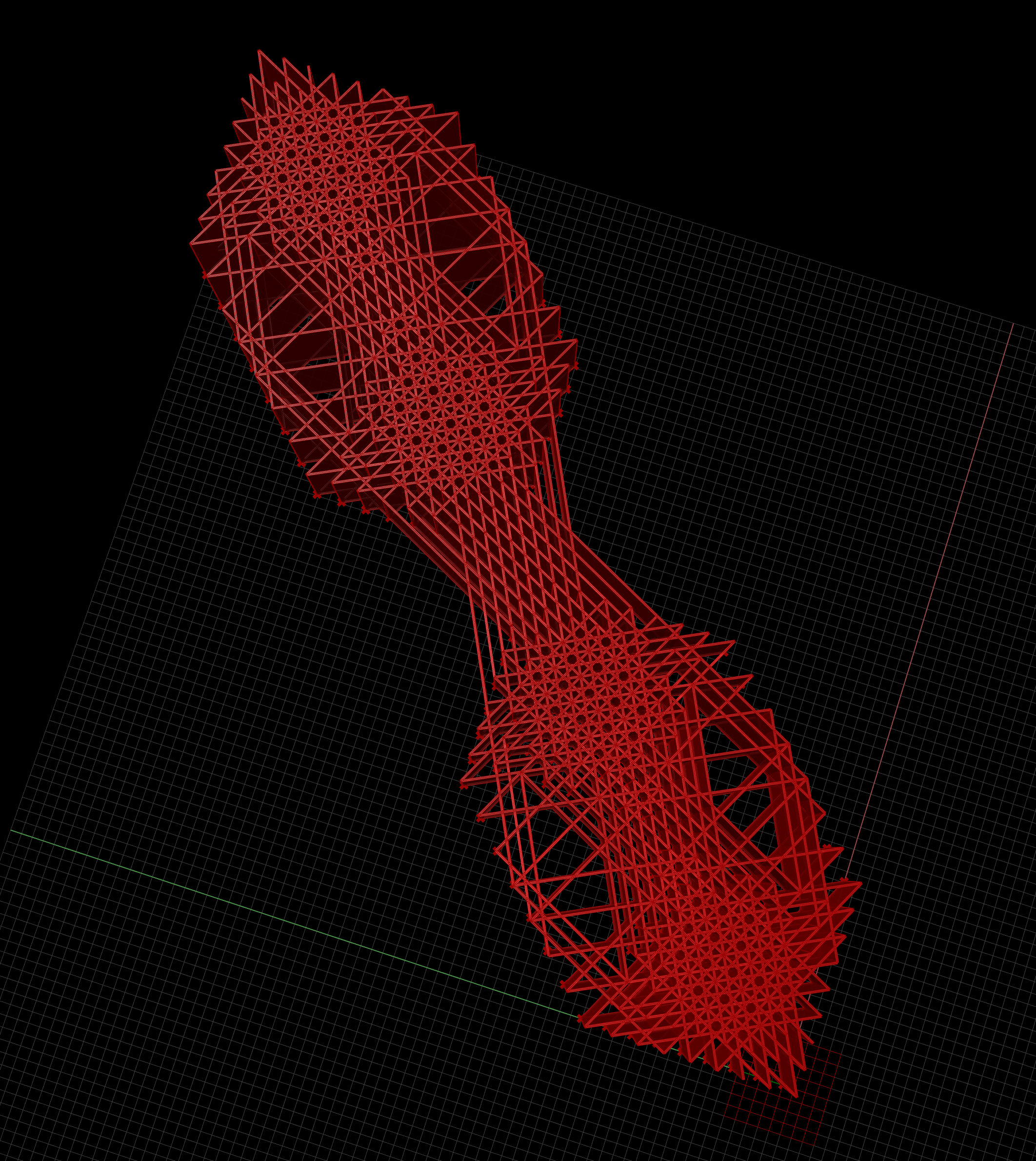
rx = 32
mod = 9
mtype = 6
distLow = 14.5
distHigh = 30.0
Example 4
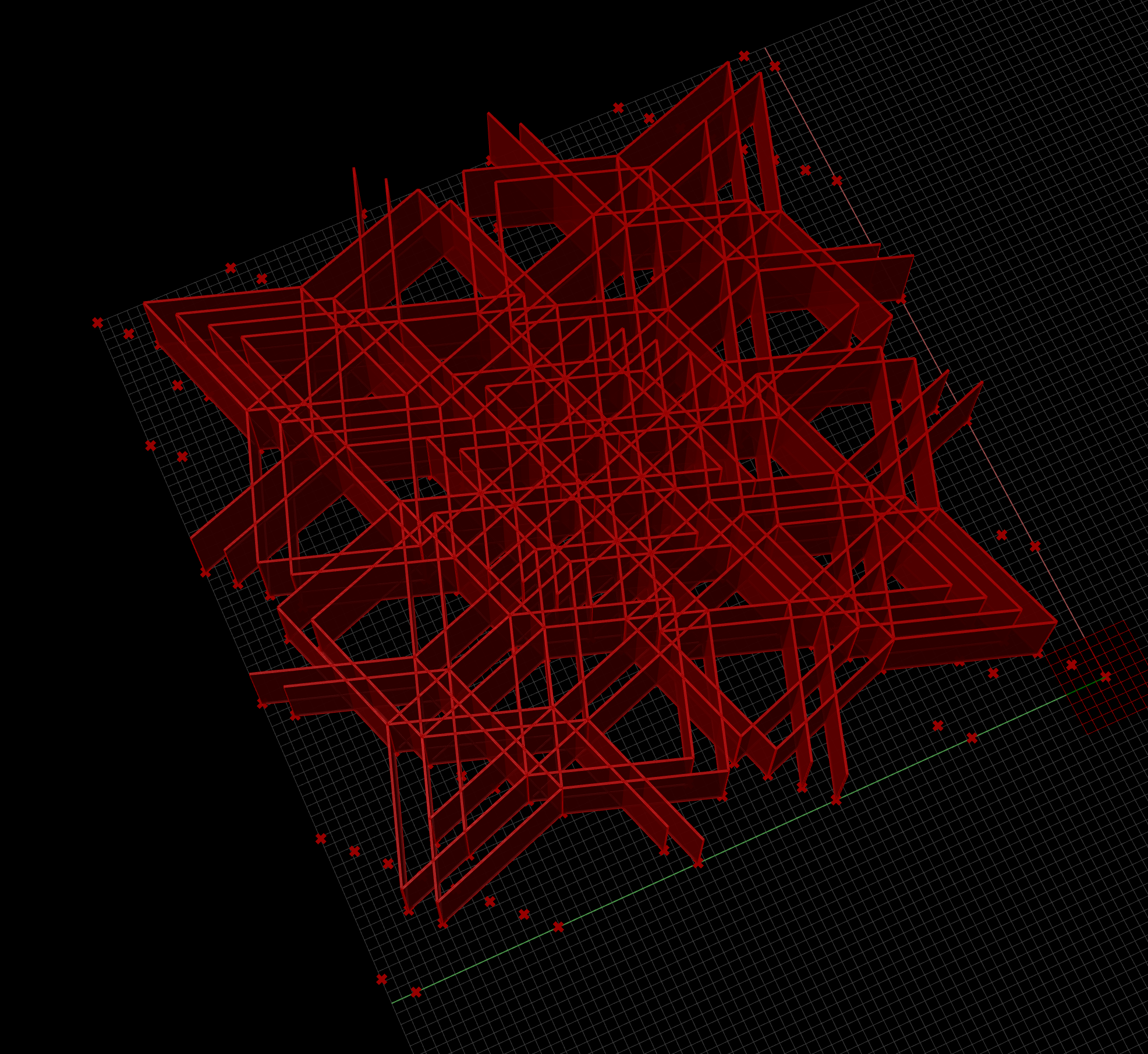
rx = 32
mod = 6
mtype = 4
distLow = 14.2
distHigh = 30.0
Example 5
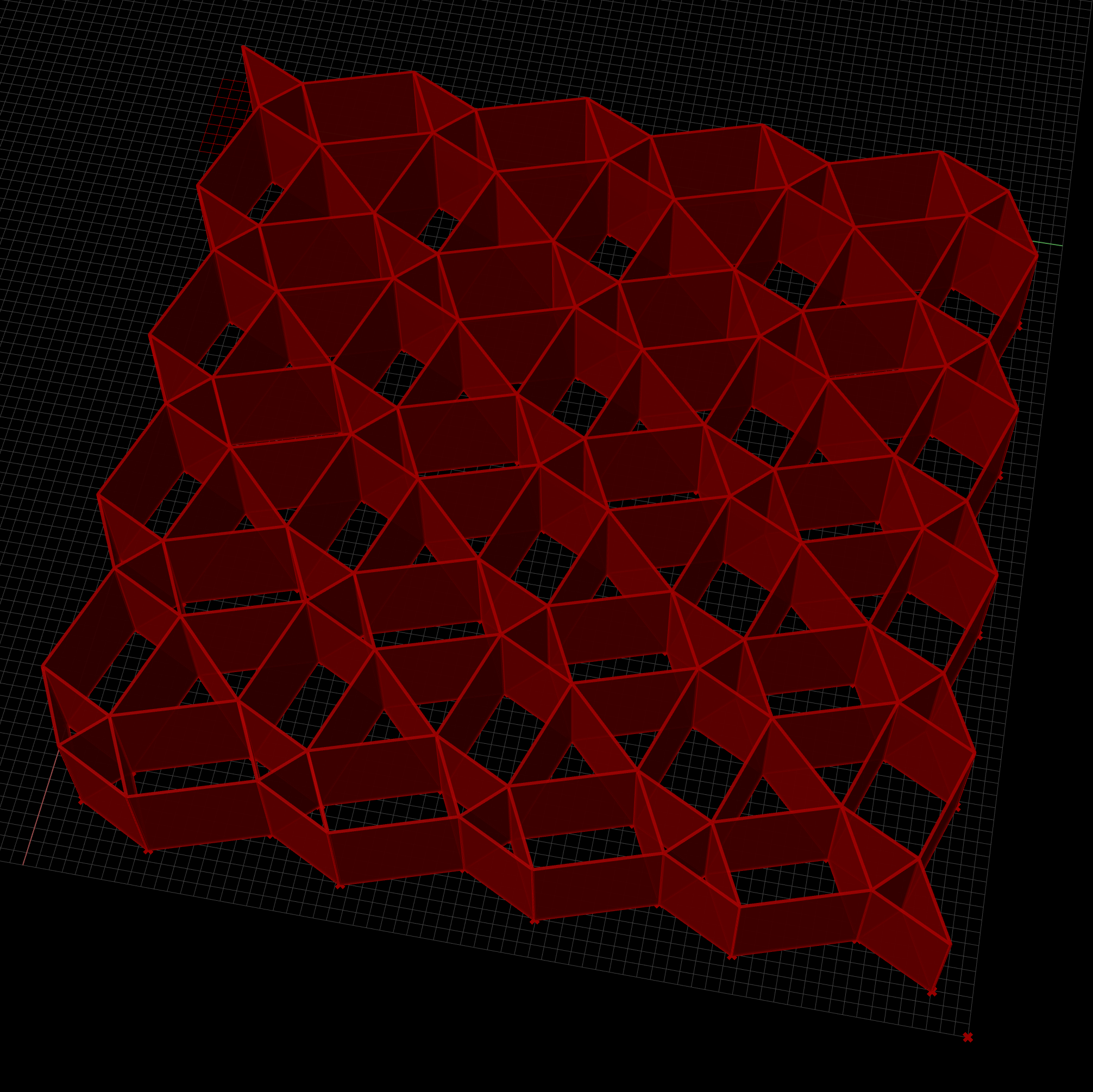
rx = 25
mod = 5
mtype = 3
distLow = 0.0
distHigh = 10.0